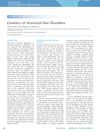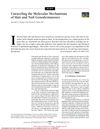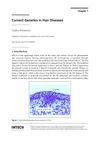New Case of Trichorhinophalangeal Syndrome-Like Phenotype with a De Novo t(2;8)(p16.1;q23.3) Translocation Which Does Not Disrupt the TRPS1 Gene
May 2014
in “
BMC medical genetics
”
TLDR A woman with a unique syndrome similar to TRPS has a genetic change near the TRPS1 gene, affecting its regulation.
The study reported a 57-year-old Caucasian woman with a de novo t(2;8)(p16.1;q23.3) translocation exhibiting a Trichorhinophalangeal syndrome (TRPS)-like phenotype, including severe craniofacial dysmorphism, alopecia universalis, and scoliosis. Genetic analyses confirmed that the TRPS1 gene was not disrupted, suggesting that the phenotype might result from the disruption of genomic architecture and the relocation of a conserved enhancer element near TRPS1. This case provided insights into the complex transcriptional regulation of TRPS1 and the ethiopathogenesis of TRPS, emphasizing the role of regulatory elements in genetic conditions.




